American History for Truthdiggers: Counterrevolution of 1787? New Constitution, New Nation
In establishing a centralized government, American elites struggled to find a balance between a top-down system and a system of the people. The arguments that raged in the late 18th century linger with us today.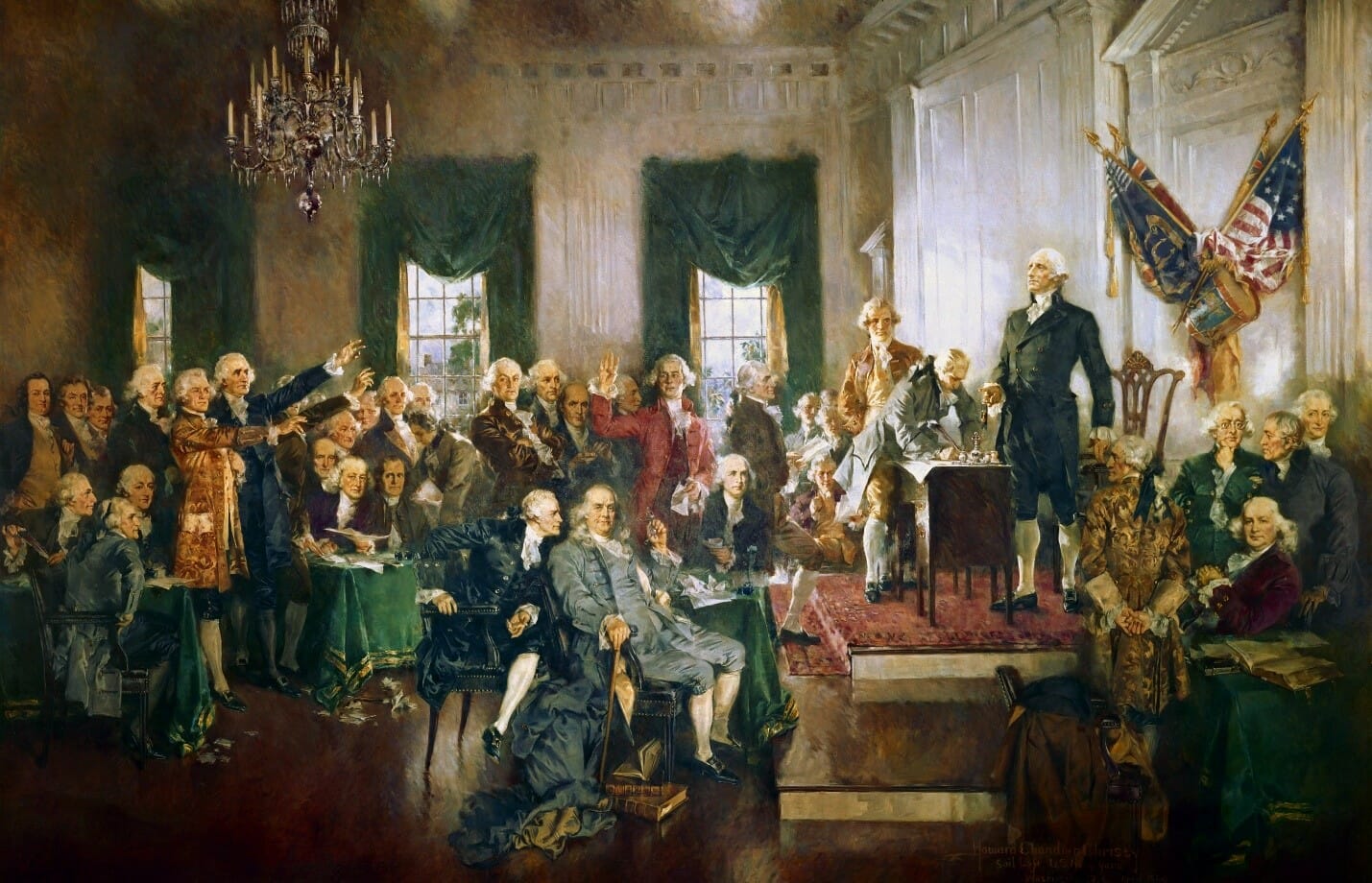 "Signing of the Constitution" (1940) by Howard Chandler Christy. The 20-by-30-foot painting, commissioned by Congress for the 150th anniversary of the Constitutional Convention, is in the U.S. Capitol.
"Signing of the Constitution" (1940) by Howard Chandler Christy. The 20-by-30-foot painting, commissioned by Congress for the 150th anniversary of the Constitutional Convention, is in the U.S. Capitol.
Editor’s note: The past is prologue. The stories we tell about ourselves and our forebears inform the sort of country we think we are and help determine public policy. As our current president promises to “Make America great again,” this moment is an appropriate time to reconsider our past, look back at various eras of United States history and re-evaluate America’s origins. When, exactly, were we “great”?
Below is the eighth installment of the “American History for Truthdiggers” series, a pull-no-punches appraisal of our shared, if flawed, past. The author of the series, Danny Sjursen, an active-duty major in the U.S. Army, served military tours in Iraq and Afghanistan and taught the nation’s checkered, often inspiring past when he was an assistant professor of history at West Point. His wartime experiences, his scholarship, his skill as a writer and his patriotism illuminate these Truthdig posts.
Part 8 of “American History for Truthdiggers.” / See: Part 1; Part 2; Part 3; Part 4; Part 5; Part 6; Part 7.
* * *
“Some men look at Constitutions with sanctimonious reverence, & deem them, like the Ark of the Covenant, too sacred to be touched. They ascribe to the men of the preceding age a wisdom more than human, and suppose what they did to be beyond amendment. I knew that age well: I belonged to it. …
“But I know also that laws and institutions must go hand in hand with the progress of the human mind … we might as well require a man to wear still the coat which fitted him when a boy, as civilized society to remain ever under the regimen of their barbarous ancestors.” —Thomas Jefferson in a letter to Samuel Kercheval, July 12, 1816
The U.S. Constitution stands almost as American scripture, deified and all but worshipped as the holy book for the American civil religion of republicanism. The above painting captures the spirit of modern memories, and mythology, surrounding the Constitutional Convention, which was held in Philadelphia. The sun shines through windows (which are conspicuously open) and delivers a halo of light upon the figure of the tall, erect George Washington. He stands, of course, on what resembles a religious altar, presiding over the delegates as they sign the sacred compact of American governance. Ben Franklin, himself an international celebrity by that time, sits prominently in the center, as the influential, young Alexander Hamilton whispers in his ear; meanwhile, the “father” of the Constitution, James Madison, sits just below the altar, on Franklin’s left.
This is an illustrative depiction of the convention: glorious, dramatic and … mostly inaccurate. In reality the shades were drawn and the windows locked. The delegates—at least those who were there on any given day—conducted their business in total, purposeful secrecy. Fifty-five elite delegates, representing only 12 of the 13 Colonies (Rhode Island refused to send a representative), took it upon themselves to secretly craft a new formula for government that they decided to be in the best interest of “We the People.”
In the intervening 200-plus years, the Constitution has become sacred indeed, an influential foundation used by politicians on all sides of the ideological spectrum to bolster their arguments and justify all number of decisions. In our modern age of hyperpartisanship, to disagree with one side or the other is to hold beliefs that are unconstitutional, if not treasonous. Still, Americans rarely consider the actual events surrounding the convention or try to understand the text of the document itself. Nor do they bother to question the very peculiarity of a 231-year-old document informing the organization of the modern political and societal space.
The Founders, or in the case of the Constitution, the Framers, are now held in the esteem of veritable deities, a pantheon of American civic saints. Many active citizens, especially on the conservative political right, argue for originalism: the need to follow and understand the Constitution as it was written, back in the late 18th century. Indeed, originalism, in one form or another, seems ascendant in post-Reagan America. This, too, is curious, given that many—though not all—Founders were skeptical about such thinking way back when.
Thomas Jefferson, though not in attendance in Philadelphia (he was then ambassador to France), remained a powerful intellectual influence on the Framers, especially on his friend James Madison. Jefferson at that time, and even more fervently as the years passed, was unimpressed by the growing veneration of the founding generation. He was increasingly persuaded that “the earth belonged to the living,” that each generation must reassess its governing structure, and that to submit to the reasoning of our “barbarous ancestors” was a form of tyranny.
Jefferson and his tradition—among those then pejoratively labeled Anti-Federalists—fervently believed the Constitution must be open to amendment and regularly reassessed as the human mind and society progressed. Others, then and now, led by ardent nationalists such as young Alexander Hamilton, actively disagreed, preferring a fixed foundation of governance for “millions yet unborn.” That debate, of centralizing Federalists versus skeptical and fearful Anti-Feds, was a tumultuous legacy bequeathed to us all, one that is still raging in 2018.
In order to take a side, or even understand the dialogue, one must look backward; must shed the patriotic yarns taught in public schools for time immemorial, and understand the truth of events in the crucial post-revolutionary years of 1787-89. Hard questions must be asked: Why did so many Americans adopt a more powerful government so soon after revolting against another? Did the Constitution serve to expand or limit American liberty? The answers might surprise you.
As always, we must remember that nothing was inevitable—not the ratification of the Constitution, the presidency of George Washington or even the continued union of the 13 individual republics (or states). A deeper look at the actions and motivations of the Framers uncovers certain darker forces at work, complicates blind veneration, but leads the modern reader closer to truth and context. That story begins with 55 prominent men and a Philadelphia summer.
The Coup d’Etat of 1787?
“Genuine liberty requires a proper degree of authority. … All communities divide themselves into the few and the many. The first are the rich and well born, the other the mass of the people. … [The masses] seldom judge … right. Give therefore to the first class a distinct, permanent share of government.” —Alexander Hamilton
“Liberty may be endangered by the abuses of liberty as well as the abuses of power.” —James Madison
Many Americans, especially coastal elites, believed the revolutionary spirit had gone too far, especially among the middling folk and commoners. Shays’ Rebellion, state-level debt relief (seen almost as a form of modern welfare spending) and the apparent weaknesses of the Continental government, convinced many—often famous—elites that something had to be done. The problem, as Hamilton boldly labeled it, was one of how to rein in “an excess of democracy.” That, of course, doesn’t sound all that revolutionary; sounds rather contrary to the beloved “spirit of ’76.”
Hamilton and Madison, among other nationalists (those who believed in a more powerful central government), led the fight to amend the existing constitution of the allied states, the Articles of Confederation. They believed the state-level legislators were too close to their constituents, and too lenient on debt and taxation. This, they believed, explained the postwar recession of the 1780s. Madison, Hamilton and even Washington, among others, believed the state legislatures to be too susceptible to popular pressure—too democratic, one might say.
Other nationalists, or as they would begin to call themselves, Federalists, sought external security through internal union. Think, then, of things in a new way: The 1787 Convention was essentially an international meeting with envoys from 12 of 13 independent states, or countries, seeking to strengthen a loose confederation into one nation. Thus, some hoped, the U.S. could elude both internal and external diplomatic dangers. There would, necessarily, be trade-offs. As the authors of the essay Federalist Number 7 would write: “to be more safe, [we] must risk being less free.” Seen in this light, security, as much as politics or economics, motivated the drive toward centralization.
This, of course, was all rather strange. Had not the very purpose of the revolution been to demand local representation and dispute governance from a distant body (in London)? Local rule, local decisions—the “spirit of ’76”! How different, then, was centralized rule from (also distant) New York or Philadelphia? In an era where, as historian Joseph Ellis reminds us, the average person strayed no more than 26 miles from his or her birthplace in an entire lifetime, a convention in Philadelphia was, for all intents and purposes, as far away as a parliament in London.
Still they met, these rather few delegates in Philadelphia in 1787. Their mandate, specified by the legal governing body of the day—the Confederation Congress—was simply to discuss and recommend changes to the Articles. And it is here, then, in the forthcoming decisions of the 55 delegates, in which matters got complicated.
Whatever else the Philly convention and the final drafted Constitution was, it was unconstitutional, the Articles then being the law of the land. Almost immediately, these unelected delegates—chosen by the state legislatures and not “We the People”—decided unilaterally to ignore Congress and scrap the entire Articles of Confederation. They would, instead, write an entirely new constitution and present it to the states and the people. It should not surprise us that they decided thus. For the most part the deck was stacked. Only Federalist-inclined men generally sought to attend, and most skeptics (including all of those who lived in the state of Rhode Island) refused to take part.
Immediately, the delegates voted to conduct all their actions in secret. The doors would be locked and the windows cloaked, and no letters about the proceedings or public proclamations would be allowed. This, they believed, would allow the men (and they all were men, and white) to speak freely and frankly. Still, this sort of secrecy hardly seemed to gel with truly republican principles. Yet so it would be, as a few dozen, unelected, nationalist-inclined, prominent men, secretly—and one could argue, illegally—decided to ignore their charter and craft a new, more-centralized government on behalf of the people of America. Furthermore, while the Articles of Confederation required unanimity among the states to be amended, the Framers unilaterally decided to change the very rules of the game: Ratification of the new constitution, they said, would require the consent of only nine out of the 13 state legislatures.
What an odd foundation, what dubious circumstances, for a document so revered by succeeding generations. Little wonder then that some have taken to calling the Constitutional Convention the Framers’ Coup. Seen in a certain light, the sentiment rings true, even if the simplicity of this alternative reading is itself flawed. Of course, few Americans know this more complex history of the Constitution. How, then, could they not blindly revere the resultant document. Perhaps that’s the point. The history that is written, the history that is widely taught, represents a conscious decision; a decision that is, more often than not, politically motivated.
Qui Bono?—An Economic Interpretation of the Constitution
“The convention of Philadelphia is to consist of members of such ability, weight and experience, that the result must be beneficial.”—John Adams, letter to John Jay, May 8, 1787
“The protection of [property] is the first object of government.”—James Madison, excerpt from Federalist Number 10
In 1913, the historian Charles Beard, an intellectual leader of the Progressive movement and U.S. liberalism, wrote one of the most influential and controversial books in U.S. history: “An Economic Interpretation of the Constitution of the United States.” In his bombshell, Beard argued that the primary motive for most Framers was to establish a strong central government that would protect their financial interests and enrich them personally. His narrative turned the founding myth on its head and shocked the academic world.
To understand why Beard thought this way, we must examine just who these 55 delegates were. First off, remember what they weren’t—common farmers or small shopkeepers. No, these were elites, individuals of wealth and, in some cases, fame. As mentioned earlier, all were male and white. More than half were college-educated at a time when less than 1 percent of the population was. Fifty-eight percent were lawyers, 31 percent owned slaves and 22 percent boasted large plantations. This will not surprise most readers. But there was something else. Twenty percent were securities speculators, or major bond holders. Eleven percent speculated in western land and hoped to turn a profit west of the Appalachians. Remember Shays’ Rebellion. That revolt kicked off when small farmers were heavily taxed and required to pay in gold and silver to fund war bonds and Continental paper money, both of which were at that point owned by wealthy speculators to a large extent.
Most of the Continental IOUs began in the hands of Revolutionary War soldiers and their suppliers, but amid rampant inflation and in desperate need of hard currency, most veterans sold off their bonds and their paper money to speculators for a fraction of the face value. Daniel Shays, the namesake of Shays’ Rebellion, was one of them; another was fellow military veteran Joseph Plumb Martin. Martin went to his grave bitter about his lack of pay and overall treatment by the national government. He described how at war’s end, the men in his unit who had paper bills sold them off “to procure decent clothing and money sufficient to enable them to pass with decency through the country [on their way home].”
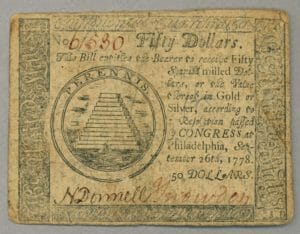
By the time of the Constitutional Convention, only 2 percent of Americans—very few of them former soldiers or the original recipients—owned bonds. Nevertheless, in the years to come, a huge portion of the state and federal tax revenue would go to servicing and paying interest on those bonds. There was just one problem: In the minds of the wealthy, the Articles of Confederation was insufficient to enforce debts. After all, it had no power to tax, and the state legislatures were proving too responsive to clamors for debt relief from their constituents. Bondholders, creditors and speculators—including many of the Framers—were terrified of the new post-revolutionary power of uneducated, indebted farmers in their local governments. These men of wealth feared for themselves and other prominent citizens, who, incidentally, the Framers believed were best suited to govern society.
Many credit-holding elites feared they would never be paid and recoup debts owed unless a strong federal government could collect taxes and had the power to enforce contracts. Beyond their personal interests, though, they also believed that only a strong central government could ensure a prosperous economy. Indeed, for many economic nationalists the two key provisions of the Constitution fell under Article I, Section 8 and 10. These clauses gave the federal government the power to tax and prohibited the states from rescuing debtors or printing paper money. Some said that even if just those two provisions made it into the new constitution, it would still be well worth voting for.
But was it that simple? Certainly, self-interest seemed to play a role, and no doubt the Framers were mostly moneyed elites. Madison himself stated that the new federal government ought “to protect the minority of the opulent against the majority.”
Without a doubt, the interests of the wealthy were front and center in the new Constitution. Still, Beard’s overly simplistic economic determinism erases the agency of Framers who were often enthusiastic nationalists and true believers. Indeed, Madison and Hamilton—thought of as “fathers” of the Constitution—were not themselves major creditors or bondholders. Besides, in the minds of these 18th-century elites, only property and wealth could render a man politically independent, out of reach of bribery and economic intimidation. This, they believed, was the surest path to public virtue.
Compromised by Compromises: The Emerging Constitution
“No mention was made of negroes or slaves in this Constitution … because it was thought the very words would contaminate the glorious fabric of American liberty.” —Dr. Benjamin Rush in a letter to Dr. John Lettsom, September 1787
American children, children who grow up to be politically active adults, are led to believe—and they usually do so with all their hearts—that the Constitution was, from the first, an inherently democratic document. But what if it wasn’t? What if, instead, it represented rather an attempt to drive a wedge between the people and their government and, ultimately, represented little more than a compromise between factions? To understand the Constitution thus is not to forever tarnish its legacy, but rather to know it in its own context, and to maintain a critical eye in contemporary political debates. That, of course, is a dangerous road, one sure to upset originalists and the powerful.
There are, in fact, three distinct ironies about the American Constitution that emerged from the Philadelphia Convention. First, the Framers intended to write a less democratic document, and—though it took generations—ended up with one of the more democratic countries on earth. Second, the delegates were responding to problems (state legislative excesses and economic anxiety) that were inflated and exaggerated. Nonetheless, they proceeded as though their biased opinions were self-evident truths. The document reflects that. And, finally, as we shall see, Americans have the Anti-Federalist opponents of the Constitution to thank for the democratic, civil libertarian protections found in the cherished Bill of Rights.
Most arguments, and eventual compromises, centered around three key debates: over representation, the presidency, and slavery. Most in the stacked deck of federalist Framers desired a legislative branch that was less responsive than that of the local state governments. Larger districts and fewer total representatives (each congressman would now represent 10 times the constituents of an average state assemblyman), Madison believed, was the best way to shield the federal government from too much popular pressure. It was necessary, he said, to “extend the sphere” of governance and create more distance between representatives and citizens.
Some wanted senators to serve for life. Six-year terms was the compromise, but this was still a very long tenure in a time of annual elections at the state level. Madison thought that the Senate should be able to veto any state law. Charles Pinckney of South Carolina argued that “no salary be allowed” for senators because the Senate “was meant to represent the wealth of the country.” There were debates and disagreements on these points, but most Framers agreed with the basic premise of distant, less-responsive representation.
The more difficult matter was how the legislative seats ought to be divided among the states. Large, populous states, backing the Virginia Plan, wanted a bicameral (two-house) Congress with proportional representation in both chambers. Smaller states backed the New Jersey Plan and equal representation among each of the sovereign states. Eventually, the two sides came to a compromise, by Connecticut, and agreed on proportional representation in the House and two senators for each individual state. It remains so today. Furthermore, senators would not be elected by the people, but rather by state legislatures. This would not change until the early 20th century. When it came to representation, the Constitution crafted a legislature far less responsive than those of the states.
Other debates surrounded the figure of the executive branch—the president. Under the Articles there was no executive. After all, the states had just rebelled against a king! Many, like Hamilton, though, wanted a sort of “Polish King,” an executive elected for life. This was blocked, but the eventual outcome was a presidency vested with significant powers (vetoes, commander-in-chief authority and pardons) and not constrained by term limits. Washington chose to set a precedent of stepping down after two terms—one that more than 30 consecutive presidents would follow—but he was not obliged to so. Not until the 1950s was the two-term limit written into a constitutional amendment.
More interestingly, the people would not directly elect the president. Rather, here too there would be distance between the government and the citizenry. The people would vote for electors who would then select the chief executive. Furthermore, elections would be an all-or-nothing game with the electors from each state voting to give all the state’s electoral votes to a candidate of choice, no matter how close the vote. The Electoral College still stands, and its existence explains how and why certain presidents (John Quincy Adams, Rutherford B. Hayes, Benjamin Harrison, George W. Bush and Donald Trump) have been elected despite losing the popular vote.
Original Sin: The 3/5 Compromise—a Road to Civil War?
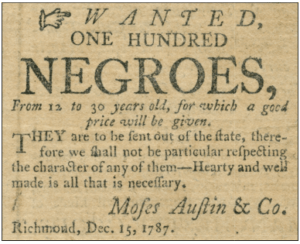
“[This Constitution] is a better security [for the institution of slavery] than any that now exists. No power is given to the general government to interpose with respect to the property in slaves now held by the states.” —James Madison in a speech reassuring delegates to the Virginia Constitutional Ratification Convention, June 1788
Perhaps the most infamous decision in the Constitution was the 3/5 Compromise. This representation arrangement was a concession to Southern states and their wealthy planters. According to the 3/5 rule—in force until the Civil War—each black slave would be counted as 60 percent of a person when calculating the number of House representatives allotted per state. Not that the slaves could vote, of course—they just counted.
The 3/5 clause had momentous, often disastrous, consequences. The math spoke for itself. The vote of one planter with 100 slaves would carry as much weight as that of 60 voters in the increasingly slave-free North. Southern states would punch above their weight in electoral politics for nearly a century, protecting and expanding slavery every step of the way. The 3/5 Compromise helps explain why five of the first seven presidents were slaveholding Southerners.
It also played a role in the agreement of the Framers not to restrict the slave trade—the forcible and brutal importation of more Africans—until 1808. The result: In the intervening 20 years more than 170,000 Africans were shipped across the Atlantic and into bondage in the southern United States. The prolific descendants of these slaves, those that survived, had populated the South when civil war finally came in 1861. Because of the 3/5 rule, the very existence of slaves lent more power and authority to their masters. The irony, according to historian Woody Holton, is that “in this instance, slaves’ interests would have been better served if they had not been considered persons at all.”
Nor can we explain away the 3/5 Compromise as merely a “sign of the times,” for many Americans were, indeed, appalled by this clause in 1787. One New Englander opposed to the Constitution wrote that “[the U.S.] had to remain a collection of republics, and not become an empire [because] if America becomes an empire, the seat of government will be to the southward … empire will suit the southern gentry; they are habituated to despotism by being the sovereigns of slaves.”
Even an eventual supporter, and Framer, of the Constitution, Philadelphia’s Gouverneur Morris, disliked the 3/5 Compromise and was horrified by the idea that
The inhabitant of Georgia and South Carolina who goes to the Coast of Africa, and in defiance of the most sacred laws of humanity, tears away his fellow creatures … and damns them to the most cruel bondages, shall have more votes instituted for protection of the rights of mankind, than the citizen of Pennsylvania or New Jersey.”
When it came to the Constitution as a final product, we must understand that the whole document was a compromise. Invisible common citizens were present in that room in Philadelphia. Left to their own devices, the Framers would have produced a government even less responsive and more aristocratic, but as they wrote the document they knew they would have to eventually get it ratified by the people. Hence, they softened the harshest clauses and generated the Constitution we all know—messy, flawed, and ever-changing.
Forgotten Founders: The Anti-Federalists and American Freedom
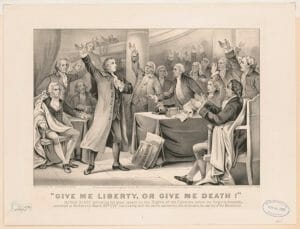
“A powerful and mighty empire is incompatible with the genius of republicanism.” —Anti-Federalist Patrick Henry
The very terms of the debate that followed, that of ratification, were flawed. Federalists versus Anti-Federalists. They waged a semantic battle, above all. As historian Pauline Maier reminds us, “[T]he words we use, especially names, shape the stories we tell.” “Anti-Federalist” was a pejorative term, used by the Feds and never accepted by most opponents of the Constitution. It was also illogical. Anti-Federalists were actually more in favor of federalism, in the traditional sense of the term, and local autonomy. Perhaps Pro-Rats (ratification) and Anti-Rats would be a more accurate, if conversely depreciative, pair of labels.
It was also never a fair fight, not from the first. The history we know and are taught is a Federalist history, a history (spoiler alert) of the victors. The Federalists wrote most of the documents (like the famous Federalist Papers) on which historians depend. Back at the time, they owned most of the newspapers in the new nation. They tended to live in big cities and trading hubs, along key transportation routes. They were also for something tangible—a new, written Constitution—rather than against such a document, internally divided as to the right course, like the Anti-Federalists.
Still, there were ever so many Anti-Federalists of one stripe or another during the period of ratification (1787-89). They lived mostly in the west, or upstate (as in New York), far from the bustling cities and wealthy commercial elites. Historians estimate that about half the citizenry opposed the Constitution at the outset. Indeed, the Feds often got enough votes to ratify only by solemnly promising to immediately amend the Constitution. New Yorkers gave in only after (Federalist) New York City threatened to secede, and Rhode Island capitulated only after the other states imposed a trade boycott on the little state.
There were also some rather famous citizens among the Anti-Feds. Patrick Henry of Virginia (he of “Give me Liberty or Give me Death” fame!) was opposed to the end. So was Virginia’s George Mason (a future university namesake). Others initially opposed the Constitution but finally acquiesced (in however lukewarm a fashion), such as Samuel Adams, John Hancock and Thomas Jefferson.
The ratification debates were intense, and it was years before all 13 states adopted the Constitution. Some votes were ever so close: Massachusetts’ was 187 to 168, New Hampshire 57 to 47, Virginia 89 to 79, New York 30 to 27 and Rhode Island 34 to 32. In other words, adoption of the Constitution we now revere was a near-run thing. And, as close as these votes were, one must ask who actually got to do the voting. White, free men. In some states it was only those who owned property. Women, slaves and Indians weren’t consulted—a good thing as far as the Federalists were concerned. As we’ll see, odds are they would have opposed an empowered national government.
So just what did they fear, these various opponents of the Constitution? Simply put, they dreaded what the rebellious colonists had so feared:
● That the president would become an executive monarch—a concern that has been partly vindicated given the increasingly imperial powers of today’s presidency in foreign affairs.
● They feared an aristocratic Senate—which was understandable given that the people didn’t directly elect senators until 1913;
● They feared a distant, unresponsive House with the power of federal taxation—like Parliament! This is still an issue for libertarian conservatives in the modern tea party movement.
● And, of course, they feared a standing national army. This, no doubt, was an outgrowth of bad memories from the Revolutionary era. Indeed, consider the text of the Declaration of Independence: the gripe that King George had “kept among us, in times of peace, a standing army without the consent of our legislatures.” A prominent Anti-Federalist in Virginia, John Tyler, asked at his state’s ratifying convention whether “[we] shall sacrifice the peace and happiness of this country, to enable us to make wanton war?” Contemporary Americans, 17 years into an undeclared “war on terror,” might think it time to revisit Tyler’s question.
The point is that the Anti-Federalists were neither history’s villains nor simply its losers. They represented the political inclinations of a significant segment of 18th-century (and some might argue 21st-century) Americans.
* * *
“The Constitution proposed … is designed not for yourselves alone, but for generations yet unborn. The principles, therefore … ought to be clearly and precisely stated, and the most express and full declaration of rights have been made—But on this subject [the Constitution] is silent.” —Robert Yates (pen name: Brutus)
Historian Woody Holton recommends a teaching experiment, one I used with my cadets when I taught at West Point. I’d end my class on the subject by asking random cadets to name their favorite right or privilege guaranteed by the Constitution, which cadets had sworn to “support and defend.” Inevitably a hulking, male Texan would offer “the right to bear arms!” Others would chime in with free speech, a free press, and freedom of religion. Then I’d ask how many of those rights were contained in the document approved at the Constitutional Convention? Met by blank, confused stares, I’d level the answer: Zero.
It’s a trick question, of course. The Constitution, as first drafted, and ratified by the states, was solely a structure-of-government document. All our most treasured protections are found in the first 10 amendments to the Constitution, what became known as the Bill of Rights. Most staunch Federalists, in fact, insisted that the Constitution be ratified “as is,” and opposed a Bill of Rights. This, of course, raises a salient, if uncomfortable, question: If the motive for the Constitution wasn’t to safeguard liberty, well, then, what does that say about the document?
Actually, it was the Anti-Feds who insisted on, and strong-armed a promise for, a Bill of Rights during the contested ratification conventions. So, do you enjoy freedom of speech, of assembly, yes, even the right to bear arms? Well, thank the oft-forgotten Anti-Federalists. It’s possible, in fact, to argue that it was actually the Anti-Feds who hewed closer to the republican principles of the Revolution, to the “Spirit of ’76.” Taking a fresh look at the Constitution’s opponents also reminds us that there is value in studying our conflicts, and, sometimes, focusing on history’s “losers.”
A ‘Roof Without Walls’: The Legacy of the Constitution
“I suppose to be self-evident, that the earth belongs to the living; that the dead have neither powers nor rights over it … every constitution, then, and every law, naturally expires at the end of [each generation]. If it be enforced longer, it is an act of force and not of right.” —Thomas Jefferson in a letter to James Madison, Sept. 6, 1789
Barely a decade after revolting against an empire, the 13 former Colonies of America made the conscious decision—no doubt egged on by their prominent elites—to graft a powerful federal government onto their separate states and, in Woody Holton’s memorable words, “launch an empire of their own.” Why and how it happened, as we’ve seen, is rather complex. Of this much we can probably be sure: Without the experience of the war, it is unlikely there would have been any call for a centralized government. As Peter Onuf has noted, “revolutionary war-making and state-making were inextricably linked.” Wars demand powerful bureaucracies, and failures are unforgiving in the storm of conflict. The weaknesses and shortfalls of the Confederation Congress convinced many rebel leaders that something sturdier was necessary. But it did not convince them all.
A powerful opposition to the Constitution and the national government persevered and fought centralization at every turn. These resisters would not vanish after ratification, but rather form a new faction to oppose what they saw as the excesses of centralized power.
There is irony, in a sense, in our contemporary deification of the Constitution across the political spectrum. Perhaps this can be explained by the ethnic, religious and regional diversity of the early republic (and our present nation). American nationalism was peculiar, and was largely constitutional for a century or more (based on a document rather than a common ethnicity)—a condition that perhaps exists even until today. It is the Constitution that has come to bind us. This, of course, is strange because in the 1780s and 1790s it was that very Constitution that divided Americans.
What is more, modern Americans forget that, in the end, the Constitutional Convention constructed a new federal government “considerably less democratic than even the most conservative state constitutions.” As delegate Robert Morris said at the time, the new government was meant to “suppress the democratic spirit.” In a further irony, despite finishing a revolution against the British Crown just five years earlier, Hamilton and other, like-minded Framers believed that a respectable United States would have to become more, not less, like Britain.
And still, something was lost in the movement toward a stronger constitution. Annual elections, congressional term limits, grass-roots voting instructions from constituents, and popular control of the money supply: All these democratic measures—most of which dated back to the Colonial era—were gone forever. One wonders whether or not this was, truly, for the better.
There was still another motivation for the Philadelphia Convention: elite fear. Shays’ Rebellion and other grass-roots revolts convinced many wealthy leaders that a strong central government, with a standing army, was necessary to quell future unrest. Seen in this light, the Constitution was meant to suppress, not to safeguard liberty, at least from the perspective of certain parties. The Southern planters, too, were gripped with fear. They remembered well that that greatest slave revolt in American history—a part of the American Revolution—had recently occurred when many thousands of slaves flocked to the British lines. The new federal army would also, they surmised, be used to deter, or quash, future slave rebellions.
Those new government powers quickly translated into action as, from 1789 to 1795, U.S. Army manpower increased fivefold, its budget threefold, and the size of the Navy by a factor of 60! In a sense, this establishment of a standing army, though modest by today’s measures, appears counter to the revolutionary spirit and a repudiation of the values of 1776.
The Constitution, and the new army it helped create, also spelled doom for native tribes and unleashed a veritable bonanza in land sales in what was then the West. Sadly, the power of the post-revolutionary native confederation north of the Ohio River may have inadvertently signed the Indians’ death warrant. Indian resistance had stymied land sales (which it was hoped would fund the Confederation budget) and helped motivate the centralization instinct among prominent speculators—many of whom became Framers. They supported a powerful central government that could secure the land from Native Americans and ensure ample profits to boot.
* * *
Perhaps a fresh, nuanced look at the Constitution’s ratification ought to lead us to restructure our understanding of the era. Maybe rather than a simple revolution-to-republic narrative there were actually numerous revolutions: one revolution surrounding independence, followed by a social, democratic revolution during the Confederation, then, finally, a rather different transformation—a constitutional revolution that sought to centralize power, ensure “security” and work toward the creation of an American nation-state. That revolution has endured, but we must remember that, at least in its own day, it was a revolution against the “excesses of democracy” an un-democratic counterrevolution of 1787!
How then can the Constitution be, as so many Americans today insist it is, an infallible, divinely inspired document? It has, after all, been amended dozens of times. Furthermore, after 74 years, it ultimately failed; with the nation torn asunder by civil war, the
Years after the Constitution became the law of the land, establishing a new powerful federal government, Fisher Ames, a staunch Massachusetts Federalist, described the new American political mood:
The fact really is, that … there is a want of accordance between our system [of government] and the state of our public opinion. The government is republican; opinion is essentially democratic. … Either, events will raise public opinion high enough to support our government, or public opinion will pull down the government to its own level. They must equalize.
We Americans are still thus divided between democratic sentiments and republican, indirect governance (how else could someone who received 3 million fewer votes than his opponent sit in the Oval Office?). Conservatives and liberals alike are still playing out this old debate. It remains to be seen if the United States can be both democratic and republican, to find a balance; or, for that matter, in these highly divided times, whether we can maintain the union itself.
In its own way, the turmoil of the 18th century is with us still.
* * *
To learn more about this topic, consider the following scholarly works:
● James West Davidson, Brian DeLay, Christine Leigh Heyrman, Mark H. Lytle, and Michael B. Stoff, “Experience History: Interpreting America’s Past,” Chapter 8: “Crisis and Constitution, 1776-1789” (2011).
● Charles A. Beard, “An Economic Interpretation of the Constitution of the United States” (1913).
● Saul Cornell, “The Other Founders: Anti-Federalism and the Dissenting Tradition in America, 1788-1828” (1999).
● Edward Countryman, “The American Revolution” (1985).
● Joseph J. Ellis, “The Quartet: Orchestrating the Second American Revolution, 1783-1789” (2015).
● David C. Hendrickson, “Escaping Insecurity: The American Founding and the Control of Violence,” from “Between Sovereignty and Anarchy: The Politics of Violence in the Revolutionary Era” (2015).
● Woody Holton, “Unruly Americans and the Origins of the Constitution” (2007).
● Pauline Maier, “Ratification: The People Debate the Constitution, 1787-1788” (2010).
● John M. Murrin, “A Roof Without Walls: The Dilemma of American National Identity,” from “Beyond Confederation: Origins of the Constitution and American Identity” (1987).
● Gary B. Nash, “The Unknown American Revolution: The Unruly Birth of Democracy and the Struggle to Create America” (2005).
● Peter S. Onuf, “Epilogue,” from “Between Sovereignty and Anarchy: The Politics of Violence in the Revolutionary Era” (2015).
● Robbie J. Totten, “Security, Two Diplomacies, and the Formation of the U.S. Constitution,” Diplomatic History 36, no. 1 (Jan. 2012).
Maj. Danny Sjursen, a regular contributor to Truthdig, is a U.S. Army officer and former history instructor at West Point. He served tours with reconnaissance units in Iraq and Afghanistan. He has written a memoir and critical analysis of the Iraq War, “Ghost Riders of Baghdad: Soldiers, Civilians, and the Myth of the Surge.” He lives with his wife and four sons in Lawrence, Kan. Follow him on Twitter at @SkepticalVet and check out his new podcast, “Fortress on a Hill,” co-hosted with fellow vet Chris “Henri” Henrikson.
[The views expressed in this article are those of the author, expressed in an unofficial capacity, and do not reflect the official policy or position of the Department of the Army, Department of Defense, or the U.S. government.]
Your support matters…Independent journalism is under threat and overshadowed by heavily funded mainstream media.
You can help level the playing field. Become a member.
Your tax-deductible contribution keeps us digging beneath the headlines to give you thought-provoking, investigative reporting and analysis that unearths what's really happening- without compromise.
Give today to support our courageous, independent journalists.
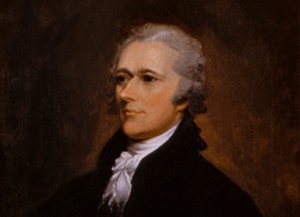



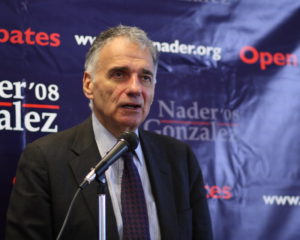
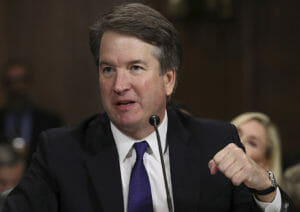


You need to be a supporter to comment.
There are currently no responses to this article.
Be the first to respond.